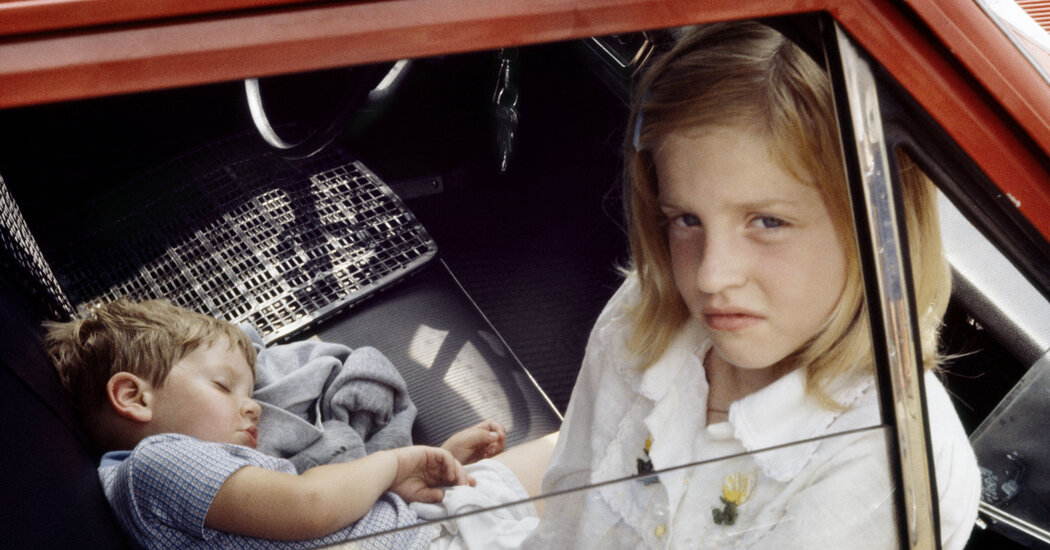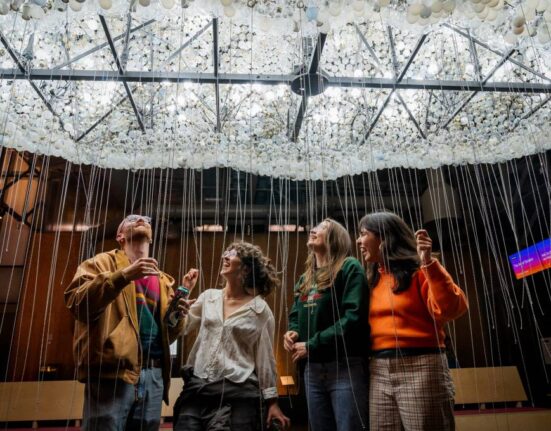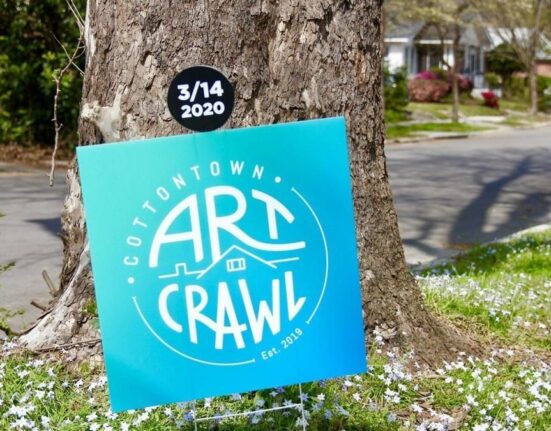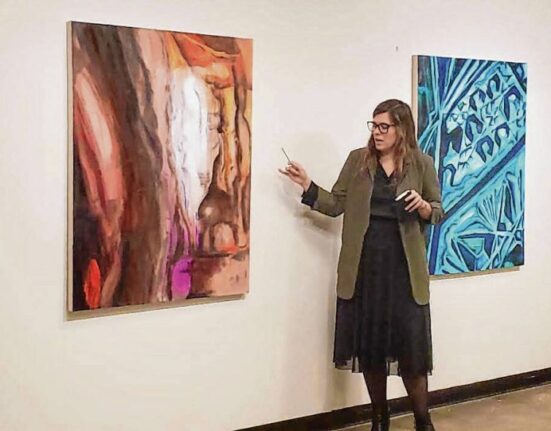The Hawaii-born artist Toshiko Takaezu was known for her ceramic works that redefined the genre with their “closed forms,” as she called them — sealed vessels whose hidden interior spaces were meant to activate the imagination. Next month, Takaezu’s life and work will be the focus of a major retrospective at the Noguchi Museum in Long Island City, Queens. “Toshiko Takaezu: Worlds Within” will present over 150 pieces from private and public collections around the country, co-curated by the art historian Glenn Adamson, the museum curator Kate Wiener and the composer and sound artist Leilehua Lanzilotti. (A 368-page monograph, published in collaboration with Yale University Press, will accompany the exhibition.) Visitors will be able to see a collection that spans seven decades of Takaezu’s career, from her early student work in Hawaii in the 1940s to immersive, monumental ceramic forms she produced in the late 1990s to early 2000s. “Takaezu was also a weaver and painter, and often constructed multimedia installations where her ceramics, textiles and paintings operated together,” says Wiener. To play off this idea, the curators organized the show chronologically, incorporating each of these media into various sections, inspired by Takaezu’s own installations. Sound will also play a role. In her ceramic pieces, Takaezu would often place a dried fragment of clay within her closed form vessels, creating a musical rattle. For this exhibit, Lanzilotti (a finalist for the 2022 Pulitzer Prize in music) has developed a series of videos offering insight into the sonic elements of Takaezu’s work — and visitors can hear those rattles firsthand via an interactive display. From March 20 to July 28; noguchi.org.
Browse Here
A Chef-Owned Farm Shop Opens in Hudson, N.Y.
In 2015, the chef and cookbook author Emma Hearst and her husband, the chef and farmer John Barker, moved from Manhattan to upstate New York, intent on cultivating the restaurant-quality produce they found difficult to source locally. They founded Forts Ferry Farm, a 100-acre spread in Latham, N.Y., along with Barker’s brother, the artist and photographer Jamie Barker. The farm now grows more than 250 varieties of vegetables, fruits, herbs and flowers, that go into the prepared foods, honey and condiments that are sold at the Troy Waterfront Farmers Market and online. The next phase in the farm’s development is a physical store, Farm Shoppe, a 50-minute drive south in bustling Hudson. The whimsical space, which opened in early February, has sea foam green walls and handmade wooden treillage. Its shelves are stocked with seasonal produce and flowers, the farm’s popular hot pepper sauces and a tightly edited collection of antique table goods including terrines, serving platters and ceramic pitchers. Later this summer, look out for open-air shopping in the store’s soon-to-be-completed backyard. fortsferryfarm.com.
From the jungles of Brazil (Inhotim) to the ranch lands of Montana (Tippet Rise Art Center) and historic estates in France (Château La Coste), art parks are popping up in unexpected places all over the world. In Jaipur, India, the Sculpture Park at the Madhavendra Palace, which opened in 2017, debuted its fourth exhibition at the end of January. Peter Nagy, an American who has run the contemporary gallery Nature Morte in New Delhi for more than two decades, curated the show, bringing together a dozen artists to exhibit their work throughout the apartments of the palace, which itself is set within the 18th-century Nahargarh Fort. In the open air courtyard, the Berlin-based artist Alicja Kwade has installed “Superposition,” an arrangement of polished stone spheres, bronze chairs and mirrors. Nagy says Kwade was intrigued by the architecture of the palace, which was completed in 1892 as a pleasure retreat for the Maharajah Sawai Madho Singh II. There is a complex of identical apartments, each meant for one of his multiple wives; wandering through them is like encountering “a maze of architectural doppelgängers,” says Nagy, noting Kwade’s oft-visited themes of reflection and illusion. The Fourth Edition of the Sculpture Park is on view through Dec. 1, instagram.com/thesculptureparkjaipur.
Stay Here
A Bright New Hotel That Nods to the History of Hyères, France
The southern French seaside town of Hyères may be best known as an incubator for fashion talent: for the past 39 years, it has hosted the International Festival of Fashion, Photography and Fashion Accessories. But locals remember its history as a coveted destination for Europeans in the Mediterranean in the late 19th century — one that declined in the 1920s as the economy reeled from World War I and interest shifted toward then-emerging destinations like Nice. When the restaurateur and hotelier David Pirone opened Le Marais Plage, a beach club and Italian restaurant, in 2013 and La Reine Jane hotel in 2017, it was to meet growing demand from festivalgoers and put his hometown back on the travelers’ map. Next month, he plans to open Lilou Hôtel in one of the last remaining original Hyères hotel properties from 1870. The interiors have been reimagined by Kim Haddou and Florent Dufourcq, the winners of the Van Cleef & Arpels grand prize at the 2018 Design Parade Toulon. The designers eschewed the terra-cotta touches that are common in Provençal interiors, opting instead for soft-hued natural materials such as cork floors and burl wood furnishings. Trellises hark back to early 20th-century winter gardens, and the use of arched doorways and boiserie in certain rooms recall the town’s historic Moorish villa from the 19th century. Even the artwork has a local touch, with pieces selected in collaboration with Jean-Pierre Blanc, the founder of the fashion festival and director of the modernist residence turned art center Villa Noailles. Lilou Hôtel opens March 29, rooms from $130, lilouhotel.fr.
See This
Artists’ Nine-to-Five Jobs Come Into Focus at a Stanford University Show
Did you know that the sculptor Larry Bell, famous for his poetic glass boxes, began working with the material only after he dropped a piece of glass while working at a frame shop in Burbank, Calif.? Or that Jeffrey Gibson, the artist representing the United States at the Venice Biennale in April, got his start as a visual merchandiser at the Ikea store in Elizabeth, N.J.? What about how the minimalist pioneer Sol LeWitt worked as a receptionist at New York’s Museum of Modern Art while Dan Flavin ran the elevator? The impact that traditional nine-to-fives have on artists’ creative output is the subject of a refreshing, insightful exhibition opening at the Cantor Arts Center at Stanford University on March 6. (The show originated at the Blanton Museum in Austin, Texas, last year; the lineup has grown to include additional figures from California.) Divided into seven sections representing industries populated by artists, such as fashion and caregiving, the show presents a range of artworks, from a LeWitt wall drawing to Gibson’s “People Like Us” (2018), an elaborate garment hanging as if in a window display. To research the show, the curator Veronica Roberts polled nearly 100 colleagues to piece together a history of art and labor that had by and large not been written. “We make it really hard to be a creative person in this country,” Roberts says. “Being an artist is so not someone sitting in a beret, smoking, having an epiphany. Inspiration can come from really mundane moments.” “Day Job” is on view at the Cantor Art Center at Stanford University through July 21, museum.stanford.edu.
If you’ve recently logged on to TikTok or watched a fashion show, you’re likely aware of the current obsession with bows. Terms like “cottagecore” and “coquette” — referring to styles of dress that make liberal use of bonnets, corsets and, yes, bows — have become inescapable in certain corners of the internet, while bows have taken over screens and catwalks alike. (Prada’s fall 2024 women’s wear show recently opened with a knee-length shift dress festooned with, by my count, at least 27 black bows.) “Untying the Bow,” a new exhibition at the Museum at FIT in New York, aims to trace the history and decipher the impact of the inescapable adornment. Curated by graduate students from the school’s masters program for fashion and textile studies, the show features 50 era-spanning garments and accessories. Silk brocade stays from around 1750 exemplify the bow’s functional origin as an easily undoable knot to secure a piece of clothing, while a Pepto pink Comme des Garçons dress from 2007 displays its decorative potential with a pair of padded bows embedded into its front bodice and right hip. The examples in this show skew toward women’s wear (as does the museum’s collection at large), though men’s wear is represented with an assortment of bow ties, an early 20th-century straw hat tied with a ribbon and English opera flats from the 1930s. Why are bows so potent now? Olivia K. Hall, one of the students who curated the show, says, “It’s a motif associated with girlishness and innocence — it feels like a reminder that in adulthood fashion can continue to be playful.” “Untying the Bow” is on view from March 1 to March 24, fitnyc.edu/museum.
From T’s Instagram







